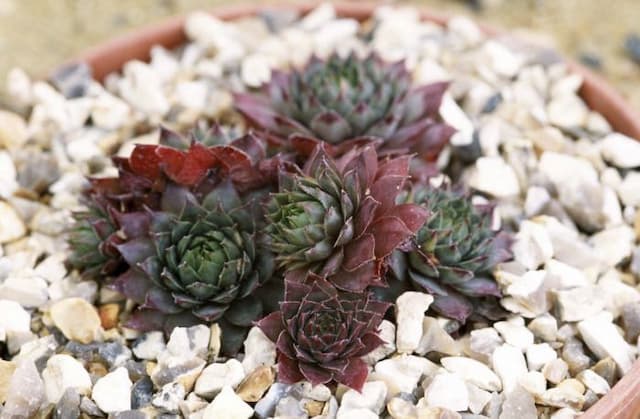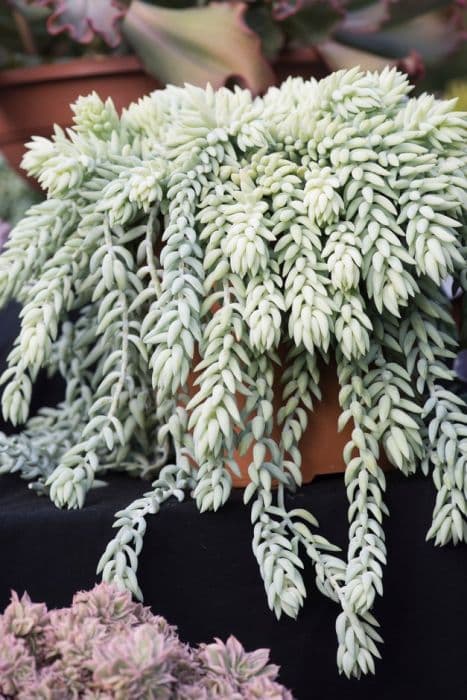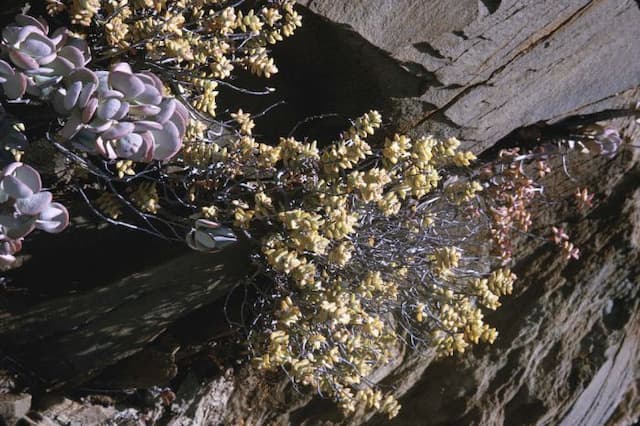Jade plant Crassula ovata



ABOUT
Jade plant is an evergreen plant with thick branches. It has thick, shiny, smooth leaves that grow in opposite pairs along the branches.
The leaves are a rich jade green color, although some may appear more like yellow-green. Some varieties may take on a red hue around the edges of the leaves if they get a lot of sunlight. New stems have the same color and texture as the leaves, but become woody and brown as they age.
It grows as an erect, rounded, thick-stemmed, highly branched shrub and reaches a height of up to 8 feet. The base is usually sparsely branched. Sometimes a single main trunk up to 2.5 inches in diameter is formed.
Juicy shoots have a gray-green color. The bark of old branches peels off with horizontal brownish streaks. Although the stems turn brown with age and appear to be woody, they never turn into true lignified tissue, remaining succulent and fleshy throughout the life of the plant.
About this plant
 Names
NamesFamily
Crassulaceae
Synonyms
Jade plant, Jade tree, Lucky plant, Money plant, Money tree, Friendship tree, Chinese rubber plant, Japanese rubber plant, Tree of happiness, Dollar plant, Baby jade, Penny plant, Dwarf rubber plant
Common names
Cotyledon lutea, Cotyledon ovata, Crassula argentea, Crassula articulata, Crassula nitida, Crassula obliqua, Crassula portulacea, Toelkenia ovata
 Toxicity
ToxicityTo humans
Jade plant shows signs of toxicity in humans when the sap of the plant comes in contact with the skin. Skin irritation symptoms include itching or burning sensation.
Jade plant should also not be swallowed because the leaves contain small amounts of arsenic. So keep the plant away from children and wear gloves when handling it.To pets
Poisonous to all animals. Signs of poisoning are vomiting, depression, incoordination.
Keep Jade plant out of reach of animals. If you suspect that your pet has ingested any part of the plant, contact your veterinarian.
 Characteristics
CharacteristicsLife cycle
Perennials
Foliage type
Evergreen
Color of leaves
Jade-green, yellow-green
Flower color
White, pink
Height
Up to 8 feet
Spread
Up to 5 feet
Plant type
Succulents
Hardiness zones
10
Native area
South Africa
Benefits
 General Benefits
General BenefitsImproves indoor air quality;
Increases the humidity in the room;
Brings good luck to the home;
Easy to care for. Medical Properties
Medical PropertiesIn some cultures, its leaf extract is used to treat conditions such as wounds, stomach upset, warts, and diabetes. In Chinese medicine, the extract of the jade plant and its tea are used to reduce problems with diabetes. Its sap can also cure warts on the skin.
Note, however, that the plant is poisonous and contains arsenic. Do not use Jade plant to cure anything without consulting a specialist. Air-purifying Qualities
Air-purifying QualitiesMany household items emit volatile organic compounds such as formaldehyde, acetone, benzene, and toluene. You can get rid of all or part of them with the Jade plant.
Interesting Facts
 Feng Shui
Feng ShuiAllows you to open up the flow of energy in the body. Increases and stimulates "Chi", inspiration and positive vibrations.
According to Feng Shui, all Jade Plant species are a symbol of money and prosperity. Zodiac Sign Compitability
Zodiac Sign CompitabilityTAURUS
Self-sufficient and persistent Taurus is known to love routine. They are disciplined, and any deviation from the usual course causes them discomfort. The best indoor plant for Taurus is Jade plant, which grows slowly and steadily. It is easy to care for, and its small and round leaves are considered to bring good luck. Plant Symbolism
Plant SymbolismSymbolizes great friendship, good luck and prosperity. The green leaves symbolize the energy and joy of friendship, and the flowers symbolize great friendship.
Jade plant is also a symbol of money as its leaves are associated with coins. It is believed that the plant brings wealth to its owners.
 Water
WaterSince Jade plant is a succulent, it is drought-resistant and is watered relatively rarely. Too wet soil is not acceptable for this plant.
In between waterings, the soil should dry out by 2/3.
During vegetation (spring and summer) water 1-2 times a week. In winter - once a month. If located in a cool room - the plant can not be watered. However, you should still pay attention to the plant. If you notice that the leaves have become wrinkled - water the Jade plant. Light
LightJade plant prefers a brightly lit location, preferably facing south or west.
It can also grow in darker conditions. However, if there is not enough light, the Jade plant will change externally. Temperature
TemperatureIn summer, the ideal temperature is 64 - 71° F during the day and 57 - 60° F at night.
In winter, the temperature is maintained at 60 - 64° F.
During the cold season, it is necessary to protect from drafts and cold air. Pruning
PruningDoes not need regular pruning. Only cut back old and diseased leaves as needed.
 Soil
SoilCrassulas need a very well-drained soil mixture to prevent root rot.
A soil mixture consisting of sod soil, deciduous soil, mulch, sand in 2:1:1:1 ratio is used.
You can also use ready-made cactus soil with 7 oz of biohumus added for every 7 ponds of soil.
Soil pH needs to be between 5,5 - 6,5. Repotting
RepottingAfter purchase, Jade plant nedds to be transplanted after 2 weeks.
Jade plant should be transplanted regularly. This is a particularly important procedure for young specimens, as the plant grows rapidly and the roots need more space. Replanting once every 2 to 3 years is recommended. Humidity & Misting
Humidity & MistingJade plant grows well in a room with moderate humidity. High humidity level can cause festering of the stem and leaves, and too dry air will contribute to leaf fall.
A humidity level between 30 - 50% is suitable. Suitable locations
Suitable locationsIndoor
All year round
Outdoor
It grows perfectly in the open ground in its natural habitat.
In other regions it is possible to grow outdoors under suitable conditions: temperature should not be lower than 60° F and a bright location.Hardiness zone
11 - 12 USDA
 Life cycle
Life cycleThe plant very rarely flowers indoors. At times, the first flowering may occur after 10 years, but more often not at all.
If the Jade plant does bloom, it has white or pale pink flowers that give off a strong sweet fragrance.
Flowering lasts for a long time, up to 3 months. Propogation
PropogationPropogation time
Spring
By stem or leaf cuttings:
The aqueous method of propagation of Jade plant is a favorite for many because it is fast and easy. Also, you can see how your plant's roots grow.
Cut off a leaf or cutting. Put it in a glass of water. Then place the container in bright, indirect sunlight. The only thing you need to do from this point on is change the water once or twice a week. When the roots have grown about 2 inches, you can transplant your new little Jade plant into the ground.
Initially the container should be small and transplant gradually increase the container as the roots grow.
 Pests
PestsSpider mite, Mealybug
 Diseases
DiseasesRoot Rot









